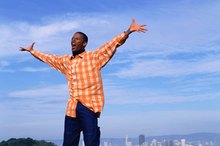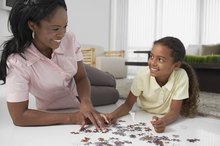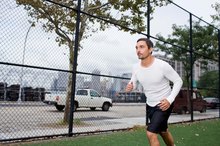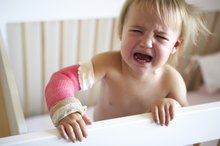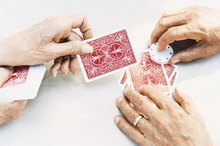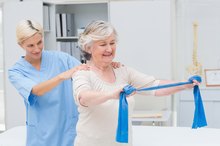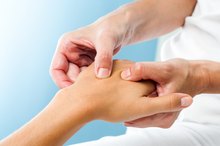What does fact checked mean?
At Healthfully, we strive to deliver objective content that is accurate and up-to-date. Our team periodically reviews articles in order to ensure content quality. The sources cited below consist of evidence from peer-reviewed journals, prominent medical organizations, academic associations, and government data.
The information contained on this site is for informational purposes only, and should not be used as a substitute for the advice of a professional health care provider. Please check with the appropriate physician regarding health questions and concerns. Although we strive to deliver accurate and up-to-date information, no guarantee to that effect is made.
Physio Exercises for Right-Sided Weakness
Muscle weakness on one side of the body can occur after a stroke or as a result of physical trauma. Called hemiparesis, one-sided weakness -- regardless of which side is affected -- can be improved through therapeutic exercises. Passive and active range-of-motion therapy and modified constraint-induced therapy can provide your body with increased circulation and muscle strength. However, visualization exercises may help to enhance your rehabilitation. Talk to your doctor or therapist about what exercises are right for you.
If you are experiencing serious medical symptoms, seek emergency treatment immediately.
Muscle Weakness and Hemiparesis
Muscular weakness is considered either subjective or objective. Subjective weakness means you feel weak, but there is no measurable loss of strength. Objective weakness is a loss of strength found during a physical exam. One-sided muscle weakness can stem from stroke or injury to the brain or nervous system, as well as multiple sclerosis, muscular dystrophy or cerebral palsy. An injury to the right side of your brain will cause hemiparesis on your left side, while an injury to the left side of your brain creates weakness on your right side.
- Muscular weakness is considered either subjective or objective.
- Objective weakness is a loss of strength found during a physical exam.
Range-of-Motion Exercises
Exercises to help Dysnomia
Learn More
Range-of-motion, ROM, exercises can help keep the limbs on your affected side from becoming stiff or losing muscle mass. According to Stroke-Rehab.com, ROM exercises can be passive, active-assisted or active, depending on whether your affected side has any voluntary movement 3. If you cannot actively move your own muscles, a therapist can move them for you or use a passive motion machine. Passive motions improve your circulation, bringing blood to muscles and tissues, and help your brain remember how to move that area. If you have partial movement, active-assist exercises or active ROM movements will also improve circulation as well as increase your muscle strength.
- Range-of-motion, ROM, exercises can help keep the limbs on your affected side from becoming stiff or losing muscle mass.
Modified Constraint-Induced Therapy
Modified constraint-induced therapy, or mCIT, is an outpatient therapy that centers on repetitive, task-specific exercises with your affected limb. During these movements, light resistance is provided to strengthen your muscles and your nervous system connections. This therapy gradually increases your brain-muscle connections and helps improve your motor function, particularly if mental exercises are involved as well. A study published by the American Heart Association in February 2009 found that mCIT increases motor function in stroke patients; its effects are enhanced, however, by mental imagery performed directly after mCIT exercise.
- Modified constraint-induced therapy, or mCIT, is an outpatient therapy that centers on repetitive, task-specific exercises with your affected limb.
- This therapy gradually increases your brain-muscle connections and helps improve your motor function, particularly if mental exercises are involved as well.
Motor Imagery
Occupational Therapy Exercises for Lifting Arms
Learn More
Though technically not a physical exercise, motor imagery is a form of visualization that may help to form connections from your brain or nervous system to your muscles. The above-mentioned study found that visualizing movement made concurrent physical therapy more effective. Patients in the group that received both mental imagery and mCIT scored significantly higher in movement evaluations than those that received only mCIT. According to the National Stroke Association, visualizing movement in your affected limbs may actually improve your ability to walk and perform other daily tasks. Including motor imagery in your rehabilitation routine may increase your chance of regaining movement.
- Though technically not a physical exercise, motor imagery is a form of visualization that may help to form connections from your brain or nervous system to your muscles.
- The above-mentioned study found that visualizing movement made concurrent physical therapy more effective.
Related Articles
References
Writer Bio
Christy Callahan has been researching and writing in the integrative health care field for over five years, focusing on neuro-endocrinology. She has a Bachelor of Science degree in biology, earned credits toward a licensure in traditional Chinese medicine and is a certified Pilates and sport yoga instructor.

